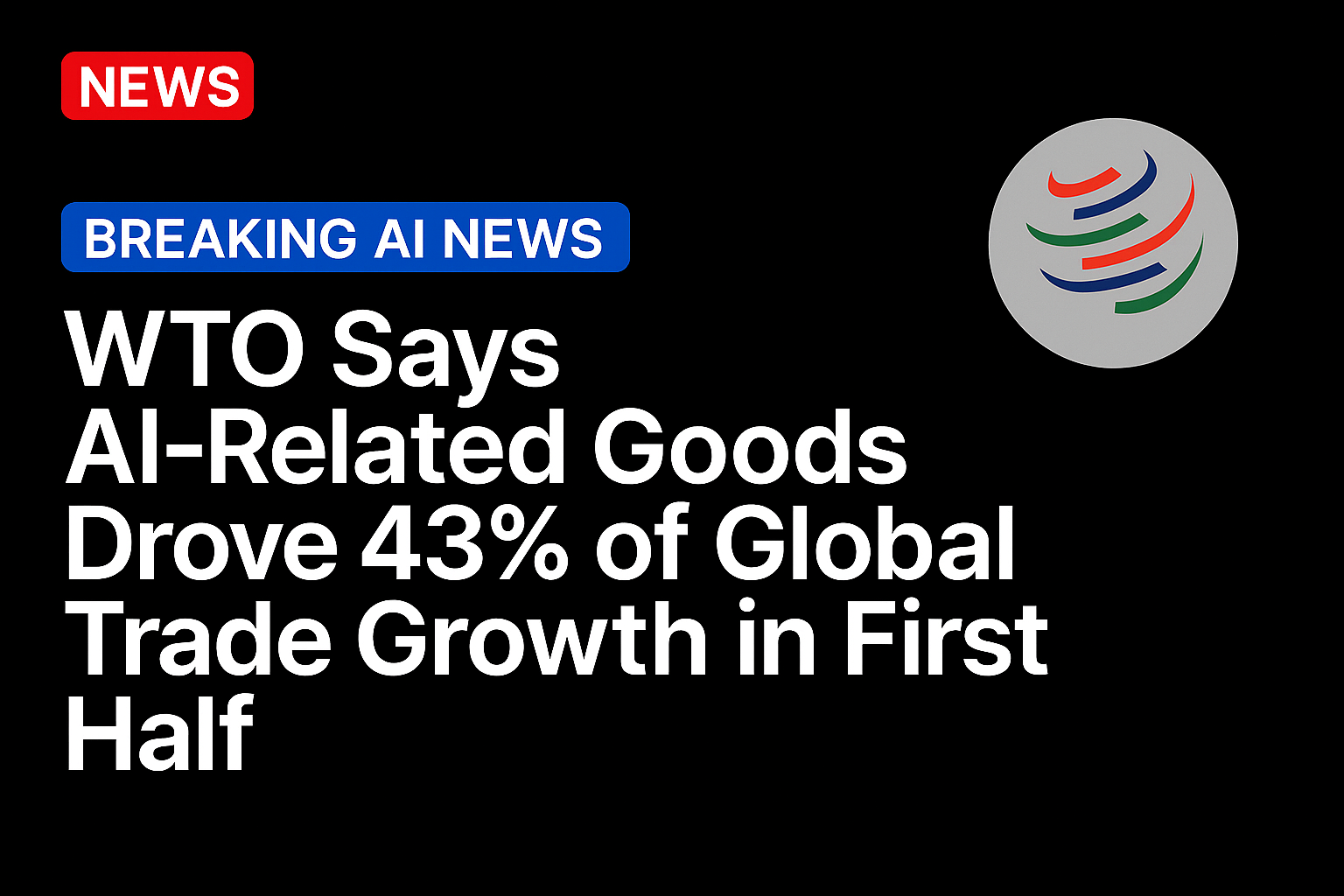
Artificial intelligence-related goods accounted for nearly half of the overall growth in world merchandise trade in the first half, the World Trade Organization said Tuesday (Oct. 7).
While AI-related products account for 15% of global imports and exports, they made up 43% of global trade growth, the WTO said in its latest Global Trade Outlook and Statistics.
The trade in these goods, which include semiconductors, servers, telecommunications equipment and about 100 other product lines, rose nearly 20% year over year to reach $1.92 trillion during the first half, according to the report.
During the same period, trade in non-AI goods grew by less than 4%, per the report.
“By the second quarter of 2025, much of the momentum for AI-related trade had shifted beyond the United States,” the report said. “Other economies accounted for close to 40% of global AI-related trade growth, with Asian suppliers and emerging markets playing an increasingly prominent role.”
“This reinforces the view that the expansion of AI-related trade is not entirely driven by recent trade policy developments but represents a broader structural wave of investment in digital infrastructure,” the report said.
The WTO said in September that with the right policies in place, AI could increase the value of cross-border flows of goods and services by nearly 40% by 2040, due to productivity gains and lower trade costs.
The organization said these policies would include targeted investment in education and training as well as inclusive policies.
Overall, the volume of world merchandise trade grew 4.9% year over year in the first half, the WTO said in a Tuesday press release highlighting findings from the latest Global Trade Outlook and Statistics report.
Together with AI-related goods, other drivers of growth included North American businesses stocking up on imported goods ahead of the implementation of tariffs as well as favorable macroeconomic conditions like disinflation, supportive fiscal policies and growth in emerging markets, according to the release.
Due to these factors, global merchandise trade “outpaced expectations” in the first half, the release said. This led WTO economists to raise their forecast for 2025 merchandise trade growth to 2.4%, up from their forecast of 0.9% in August.
“Countries’ measured response to tariff changes in general, the growth potential of AI, as well as increased trade among the rest of the world — particularly among emerging economies — helped ease trade setbacks in 2025,” WTO Director-General Ngozi Okonjo-Iweala said in the release.
Source: https://www.pymnts.com/




